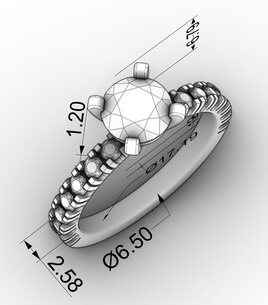

 English
English

At NOVOCI, we only deal with the most reputable diamond suppliers, ensuring that we use only natural, untreated, conflict-free diamonds of the highest quality in our jewelry production. All our loose diamonds come with diamond certificates from well-known gemological laboratories. Each piece of diamond jewelry you buy from us has a 30-day money-back guarantee or option to exchange.
Customer satisfaction is our top priority. We, therefore, dedicate our time to helping you find that special diamond jewelry gift. The first step on your journey to discovering the timeless beauty and diversity of diamonds could be our diamond guide.
There is still considerable uncertainty about the origin of the diamond, which has no doubt added to its mystery and allure. Unique in so many ways, the word ‘diamond’ originates from the Greek word adámas, meaning invincible – a fitting name for the hardest natural element found on earth.
The most widely accepted theory is that diamonds formed at great depths of between 150 to 250 km in the earth’s mantle, under enormous pressures and temperatures. They were then forced to the earth’s surface through volcanic eruptions and deposited in magmatic rock, formed by the solidification of magma, or lava.
Diamond’s outstanding resistance to physical and corrosive agents means that it is present in a diverse variety of environments, in secondary deposits that have undergone two or more cycles of erosion and sedimentation spanning millions of years. It is therefore impossible to establish a relationship between current diamond deposits and their actual place of origin, deep in the earth.
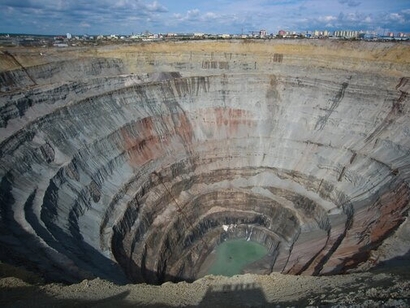

Ancient civilizations were captivated by diamond’s exceptional hardness, optical qualities, and brilliance, though colored gems tended to be more popular in jewelry and ornamentation. For centuries, India remained the only place where we could find diamonds. Not until the early 18th century did diamond mining begin in earnest in Brazil – a destination that quickly became the world’s principal supplier.
By the second half of the nineteenth century, rich diamond deposits had been discovered in South Africa, transforming the country into the world’s chief source of diamonds. However, since the early 20th century, numerous deposits have been found on the African Continent in Angola, the Democratic Republic of Congo (formerly Zaire), Ghana, Guinea, Ivory Coast, and Tanzania – a source for one of the world’s largest deposits. Namibia, which gained independence from South Africa in 1990, is also a primary source of gem-quality diamonds.
In other parts of the world, Russia is one of the largest producers, while China also has diamond mines located primarily in its Hunan province. New South Wales in Australia is home to some of the world’s hardest natural diamonds, used mainly in the diamond industry to polish other diamonds. Also, a diamond can be found in Guyana, Venezuela, and Borneo, albeit in smaller quantities.
Until the middle of the 20th century, there was no consensus on a standard by which we would assess diamonds’ qualities. The Gemological Institute of America (GIA) was the first institute to create the universally accepted standard for evaluating diamonds, known as the 4Cs: Color, Clarity, Cut, and Carat Weight.
The establishment of the 4Cs standard led to two significant developments in the diamond industry: a universal language was now available to communicate diamonds' quality. Customers could precisely appreciate what they were buying.
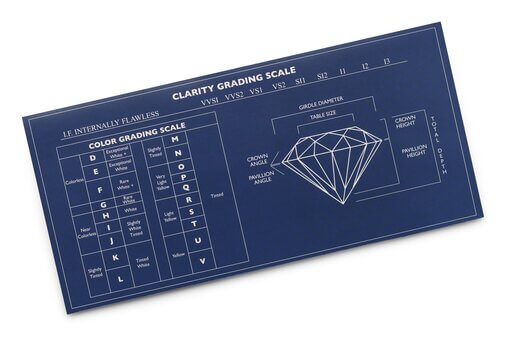

Cutting is the process whereby we make a rough stone to assume a particular shape – one that brings out the stone’s luster and color and enables it to be set in an item of jewelry. In the past, the natural facets of a gemstone’s crystal structure were the main attraction, but today, the faceted cut has become well established as the best way to present a gemstone, especially the beauty of a diamond. Faceting shows off a diamond’s extraordinary ability to reflect light, breaking it into the visible spectrum's colors.
The earliest record of cut diamonds dates back to the mid-fourteenth century, but the process was more about making unattractive rough stones into physically pleasing-looking gems. These cuts involved the fashioning of one or more facets arranged in a radiating pattern around the stone, while the base was usually left uncut or reasonably flat. Today, there are various cuts – round, emerald, pear, oval, marquise, princess.
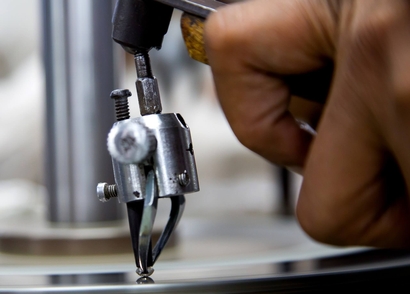

While the round cut is the most common, other cuts like the oval, pear, and marquise are also widely used. Some diamonds are also cut into a rectangular shape with truncated corners, a crown, and a pavilion, known as the ‘emerald cut.’ While this gives the stone a less lustrous effect, with a lower dispersion of light, it reduces carat weight loss. Given the rarity of diamonds, the problem of weight loss during cutting is a crucial issue.
The cut's quality is essential to a diamond’s beauty and, of course, its ultimate value. The cut is the most complex and skillful of the processes and the most technically difficult to assess. Skilled craft and artistic precision are needed to capture a stone’s proportions and symmetry perfectly so that it can deliver the unrivaled return of light that only diamonds can achieve.
For a standard round brilliant cut, the Cut Grading System analyzes seven components. The first three – brightness, fire, and scintillation – look at the diamond’s overall face-up appearance. The remaining four – weight ratio, durability, polish, and symmetry – are used to gauge the diamond’s craftsmanship and design.
Polish and Symmetry
A diamond’s overall smoothness and surface condition are essential factors in determining a polished stone's quality. Polishing is usually done on a felt, leather, or fabric-covered rotating horizontal disc, known as a lap, onto which very fine abrasive powder is sprinkled. A well-polished diamond produces bright, crystal-clear reflections and an undistorted dispersion of light, while a poorly polished gemstone will appear dull.
What is also very important is the symmetry of a stone after it has been cut: the outline, placement, and alignment of each facet. Achieving a perfect cut and symmetry is one of the most challenging processes to get right. A diamond of inferior symmetry will have visibly deviated from its planned shape, resulting in a duller, less brilliant gemstone due to the misdirected transmission of light.
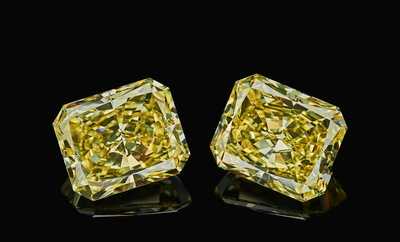

Evaluating the color of a gem-quality diamond is, in fact, based on the absence of color. A diamond that is structurally perfect and void of chemical contamination has no color or hue and is therefore of higher value. The standard grading system measures how colorless a diamond is by comparing the assessed diamond to ‘master stones’ with established color values.
The color grading scale begins with the letter D, representing a colorless gemstone, and continues through to the letter Z, with each letter on the scale describing a measured step in the presence of color. To the untrained eye – and without the proper instruments – these color distinctions are so subtle they would be difficult for a layperson to spot, however in terms of the diamond’s quality and the price, they make a huge difference.
Diamond occurs when carbon exposes to tremendous heat and pressure deep below the Earth’s surface. These violent forces cause several internal characteristics to the diamond, known as ‘inclusions’ and external features known as ‘blemishes.’
Evaluating the clarity of a diamond is a complex process that involves determining the number of inclusions, their position, size, relief, nature, and the effects they have on the overall aesthetics of the gemstone. You should note that no diamond is perfect, but the closer it comes to perfection, the higher its value.
Without the proper instruments or the trained eye of a diamond grader, many of these tiny inclusions and blemishes would go unnoticed. The GIA Clarity Scale – the standard in measuring clarity – is divided into six categories with several sub-categories, resulting in 11 specific grades for measuring clarity. To the average person, a VS1 and an SI2 diamond would have no discernable differences, but they are, in fact, quite different in terms of quality and value.
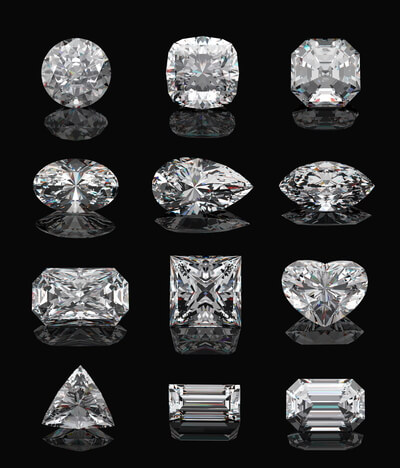

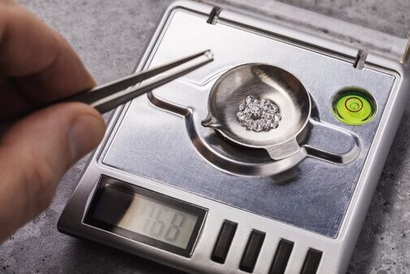

The weight of a diamond is measured in carat, with a metric ‘carat’ defined as 200 milligrams. Each carat can be subdivided into 100 ‘points’, which allows for a very accurate weight reading within a hundredth decimal place. Therefore, a diamond that is less than a carat can still be easily weighed. For example, a jeweler may determine that a diamond weighs 0.55 carats and will refer to this as a ‘fifty-five pointer.’ The weight of a diamond that is more than one carat is expressed in carats and decimals; for example, a 1.09-carat stone would be described as a ‘one point oh nine carats.’
All things being equal, the value of a diamond increases with its carat weight since larger diamonds are a rare and desirable commodity. However, two stones with the exact carat weight may also have very different values, as other factors determining the Clarity, Color, and Cut can affect the overall price and value. When purchasing a diamond, it is, therefore, essential to remember that carat weight alone does not determine the price.
The weight of a diamond is measured in carat, with a metric ‘carat’ defined as 200 milligrams. Each carat can be subdivided into 100 ‘points’, which allows for a very accurate weight reading within a hundredth decimal place. Therefore, a diamond that is less than a carat can still be easily weighed. For example, a jeweler may determine that a diamond weighs 0.55 carats and will refer to this as a ‘fifty-five pointer.’ The weight of a diamond that is more than one carat is expressed in carats and decimals; for example, a 1.09-carat stone would be described as a ‘one point oh nine carats.’ All things being equal, the value of a diamond increases with its carat weight since larger diamonds are a rare and desirable commodity. However, two stones with the exact carat weight may also have very different values, as other factors determining the Clarity, Color, and Cut can affect the overall price and value. When purchasing a diamond, it is, therefore, essential to remember that carat weight alone does not determine the price.
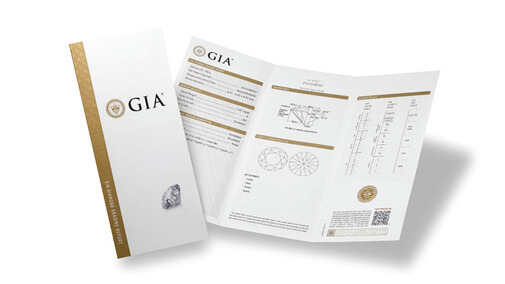

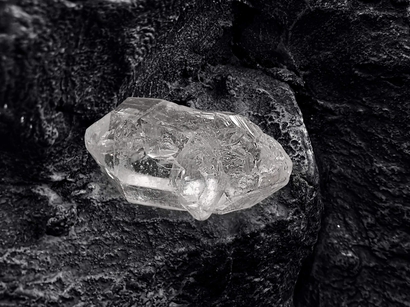

With diamonds being so rare and so highly priced, it’s not surprising that many people have attempted to replicate this precious gem. However, it wasn’t until the early 1950s in Sweden that scientists successfully produced a synthetic equivalent. Today, synthetic or laboratory-grown diamonds have become more commonplace, and what’s more, they are much harder to detect.
While synthetic diamond has essentially the same crystal structure, chemical composition, optical and physical properties as natural diamond, it is the result of induced heat and pressure processes rather than millions of years of geological evolvement. There are several ways to ‘grow’ synthetic diamonds in a laboratory. The two most established types are high-pressure, high-temperature (HPHT), and chemical vapor deposition (CVD) diamonds. Both HPHT and CVD diamonds are practically identical to natural diamonds and it is only through careful analysis in a gem laboratory that one can detect the differences.
While synthetic diamonds are still only a relatively small part of the market and are used mainly for industrial purposes, they are becoming more widespread and increasingly difficult to detect without proper analysis. If you are buying diamond jewelry, it is essential to secure a diamond certificate that verifies you are buying a natural diamond. At Novoci, none of our diamond jewelry items use synthetic diamonds and each piece comes with a diamond certificate from a reputable laboratory, guaranteeing its authenticity.